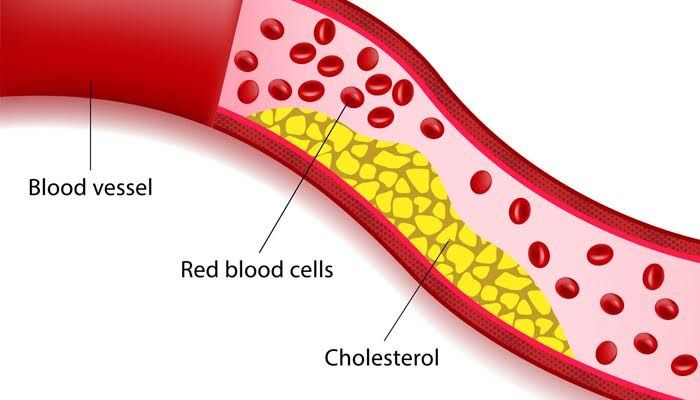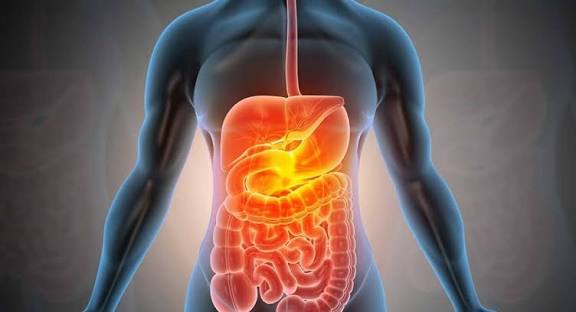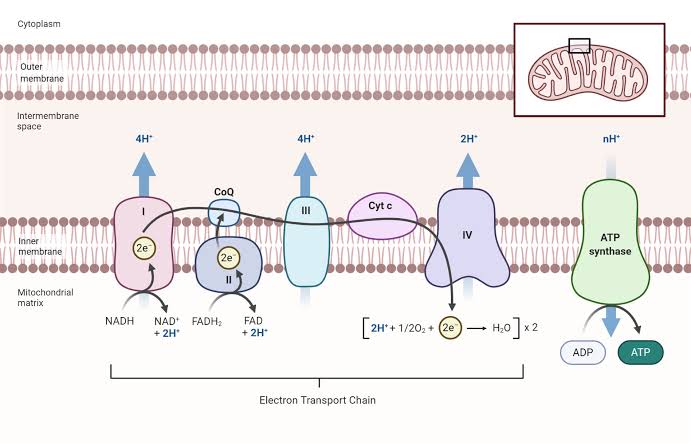
Cholesterol Metabolism and Its Regulation
Introduction to Cholesterol Metabolism
Cholesterol metabolism is a vital process that involves the synthesis, uptake, efflux, and storage of cholesterol within the body. Cholesterol is an essential lipid that plays critical roles in cellular structure and function, including maintaining membrane integrity, serving as a precursor for steroid hormones, bile acids, and vitamin D. The regulation of cholesterol metabolism is complex and tightly controlled to maintain homeostasis.
Biosynthesis of Cholesterol
Cholesterol biosynthesis primarily occurs in the liver and involves a multi-step enzymatic process. The pathway begins with acetyl-CoA, which undergoes several transformations through intermediates such as HMG-CoA (3-hydroxy-3-methyl-glutaryl-CoA) before being converted into mevalonate. This step is catalyzed by HMG-CoA reductase, a key regulatory enzyme in cholesterol synthesis. Following mevalonate formation, several reactions lead to the production of squalene and ultimately cholesterol. The regulation of this pathway is crucial; when cellular cholesterol levels are high, the expression of HMG-CoA reductase decreases through feedback inhibition.
Uptake of Cholesterol
Cholesterol can also be obtained from dietary sources or synthesized endogenously. The uptake process primarily occurs in the intestines where dietary cholesterol is absorbed into enterocytes via transport proteins such as Niemann-Pick C1-like 1 (NPC1L1). Once inside the cells, cholesterol can be esterified for storage or incorporated into chylomicrons for transport through the lymphatic system into circulation.
Efflux of Cholesterol
Reverse cholesterol transport (RCT) is a critical mechanism by which excess cholesterol is removed from peripheral tissues and transported back to the liver for excretion or recycling. This process involves high-density lipoproteins (HDL), which collect excess cholesterol from cells and deliver it to the liver. Key proteins involved in RCT include ATP-binding cassette transporters (ABCA1 and ABCG1), which facilitate the efflux of free cholesterol from cells to HDL particles.
Storage of Cholesterol
Excess cholesterol can be stored in cells as cholesteryl esters within lipid droplets. This storage form allows cells to manage fluctuations in cholesterol availability without disrupting membrane integrity or function. Enzymes such as acyl-CoA:cholesterol acyltransferase (ACAT) play a significant role in converting free cholesterol into cholesteryl esters for storage.
Regulation of Cholesterol Metabolism
The regulation of cholesterol metabolism is multifaceted and involves various mechanisms:
- Transcriptional Regulation: The endoplasmic reticulum (ER) plays a central role in sensing cellular cholesterol levels through transcription factors like sterol regulatory element-binding proteins (SREBPs). When intracellular cholesterol levels are low, SREBPs are activated and translocate to the nucleus to promote genes involved in cholesterol synthesis and uptake.
- Feedback Inhibition: High levels of intracellular cholesterol inhibit further synthesis by downregulating HMG-CoA reductase activity and reducing SREBP activation.
- Post-Translational Modifications: Enzymes involved in cholesterol metabolism can also be regulated by post-translational modifications such as phosphorylation or ubiquitination, affecting their activity or stability.
- Endoplasmic Reticulum Stress: Conditions leading to ER stress can disrupt normal metabolic functions, influencing both lipid metabolism and overall cellular health.
- Hormonal Regulation: Hormones such as insulin can enhance lipogenesis while glucagon may promote lipolysis; these hormonal signals also indirectly affect cholesterol metabolism by influencing energy balance within cells.
- Inflammatory Signals: Chronic inflammation can alter lipid metabolism pathways, leading to dysregulated cholesterol homeostasis which contributes to diseases like atherosclerosis.
In summary, maintaining proper regulation of cholesterol metabolism is crucial for preventing disorders associated with abnormal lipid levels such as cardiovascular disease (CVD), metabolic syndrome, and other systemic diseases.
Triacylglycerol Metabolism
Triacylglycerols (TAGs), also known as triglycerides, are the primary form of stored energy in animals and play a crucial role in metabolism. They are composed of glycerol and three fatty acids, and their metabolism involves several key processes: biosynthesis, storage, mobilization, and degradation.
1. Biosynthesis of Triacylglycerols
The biosynthesis of triacylglycerols occurs mainly through three pathways:
- Kennedy Pathway: This is the predominant pathway for TAG synthesis in the liver and adipose tissue. It begins with the formation of sn-glycerol-3-phosphate from glucose via glycolysis or from glycerol through the action of glycerol kinase. The glycerol backbone is then esterified with fatty acids to form diacylglycerol (DAG), which is subsequently converted into triacylglycerol by adding another fatty acid.
- Monoacylglycerol Pathway: This pathway primarily occurs in the intestines where monoacylglycerols (MAGs) derived from dietary fats are re-esterified to form TAGs. This process is essential for absorbing dietary lipids.
- Dihydroxyacetone Phosphate Pathway: In this pathway, dihydroxyacetone phosphate (DHAP) serves as a precursor for glycerol-3-phosphate production. This route is particularly important in liver cells.
In addition to these pathways, some plant seeds utilize a distinct mechanism involving diacylglycerol transferase for TAG synthesis.
2. Storage of Triacylglycerols
Once synthesized, triacylglycerols are stored primarily in adipose tissue as lipid droplets. These droplets serve not only as energy reserves but also play roles in cellular signaling and lipid homeostasis. The storage process involves packaging TAGs within cytoplasmic lipid droplets that are surrounded by a phospholipid monolayer and proteins such as perilipins that help regulate lipid metabolism.
3. Mobilization of Triacylglycerols
When energy is needed, triacylglycerols undergo lipolysis, a process where they are broken down into free fatty acids and glycerol. This reaction is catalyzed by hormone-sensitive lipase (HSL) and other lipases. The released fatty acids can be transported to various tissues where they undergo β-oxidation to produce ATP, while glycerol can be converted back into glucose or enter gluconeogenesis.
4. Degradation of Triacylglycerols
The degradation of triacylglycerols primarily occurs through β-oxidation within mitochondria or peroxisomes. Fatty acids are activated to acyl-CoA before being transported into mitochondria where they undergo successive cycles of β-oxidation, resulting in the production of acetyl-CoA units that enter the citric acid cycle for further energy extraction.
5. Regulation of Triacylglycerol Metabolism
Triacylglycerol metabolism is tightly regulated by hormonal signals such as insulin and glucagon. Insulin promotes TAG synthesis and storage while inhibiting lipolysis, whereas glucagon stimulates lipase activity leading to increased breakdown of stored TAGs during fasting states.
6. Clinical Implications
Excessive accumulation of triacylglycerols can lead to obesity and associated metabolic disorders such as insulin resistance, steatohepatitis, and cardiovascular diseases. Understanding these metabolic pathways has significant implications for developing therapeutic strategies targeting dyslipidemia and related conditions.
In summary, triacylglycerols serve vital functions in energy storage and metabolism through complex biosynthetic pathways, regulated mobilization processes, and degradation mechanisms that ensure energy availability when needed.
Lipoprotein Structural Features and Types
Introduction to Lipoproteins
Lipoproteins are complex particles composed of lipids (fats) and proteins. They play a crucial role in the transport of cholesterol and triglycerides through the bloodstream, as these lipids are not soluble in water. The structure of lipoproteins allows them to carry these hydrophobic molecules effectively.
Structural Features of Lipoproteins
- Core and Shell Composition:
- Lipoproteins have a core that contains triglycerides and cholesterol esters, which are surrounded by a shell made up of phospholipids, free cholesterol, and proteins known as apolipoproteins. This arrangement is essential for their solubility in blood plasma.
- The hydrophobic core is shielded from the aqueous environment by the amphipathic nature of phospholipids, where the hydrophilic (water-attracting) heads face outward while the hydrophobic (water-repelling) tails face inward.
- Apolipoproteins:
- Apolipoproteins are integral components of lipoproteins that serve multiple functions including structural support, receptor recognition, and enzyme activation. Different types of apolipoproteins define various classes of lipoproteins.
- For example, Apolipoprotein A-I (ApoA-I) is primarily associated with high-density lipoprotein (HDL), while Apolipoprotein B-100 (ApoB-100) is found in low-density lipoprotein (LDL).
- Size and Density Variability:
- Lipoproteins vary in size and density based on their lipid-to-protein ratio. Generally, lower density corresponds to larger size due to higher lipid content.
- For instance, chylomicrons are the largest and least dense lipoproteins, while HDL particles are smaller and denser.
- Kringles Structure:
- Some apolipoproteins contain regions called kringles, which consist of repeated motifs that can bind to specific receptors or other proteins in the body. This feature enhances their functionality in lipid metabolism.
Types of Lipoproteins
There are five main classes of lipoproteins distinguished by their density and function:
- Chylomicrons:
- These are the largest type of lipoprotein formed in the intestines after fat digestion. They transport dietary triglycerides from the intestines to other tissues.
- Chylomicrons have a very low density due to their high triglyceride content.
- Very-Low-Density Lipoprotein (VLDL):
- VLDL is produced by the liver and primarily carries endogenous triglycerides to tissues.
- It has a higher protein content than chylomicrons but still remains low-density.
- Low-Density Lipoprotein (LDL):
- Often referred to as “bad cholesterol,” LDL is derived from VLDL after it has delivered its triglyceride content.
- LDL particles carry cholesterol from the liver to peripheral tissues; however, high levels can lead to plaque buildup in arteries.
- Intermediate-Density Lipoprotein (IDL):
- IDL is a transitional form between VLDL and LDL that occurs during lipid metabolism.
- It contains both triglycerides and cholesterol but is less common compared to other types.
- High-Density Lipoprotein (HDL):
- Known as “good cholesterol,” HDL helps remove excess cholesterol from tissues and transports it back to the liver for excretion or recycling.
- HDL has a higher protein content relative to its lipid content, making it denser than LDL.
Conclusion
Understanding the structural features and types of lipoproteins is essential for comprehending their roles in lipid metabolism and cardiovascular health. Each type serves distinct functions within the body’s circulatory system, influencing overall health outcomes related to cholesterol levels.
Important Laboratory Tests of Blood Lipids and Lipoproteins
1. Overview of Blood Lipids and Lipoproteins
Blood lipids primarily include cholesterol and triglycerides, which are essential for various bodily functions but can pose health risks when present in excessive amounts. These lipids are transported in the bloodstream by lipoproteins, which are complexes made up of fats (lipids) and proteins. The main types of lipoproteins relevant to cardiovascular health are:
- Low-Density Lipoprotein (LDL): Often referred to as “bad” cholesterol, high levels of LDL can lead to plaque buildup in arteries, increasing the risk of atherosclerosis, heart disease, and stroke.
- High-Density Lipoprotein (HDL): Known as “good” cholesterol, HDL helps remove cholesterol from the bloodstream and transport it to the liver for excretion or recycling. Higher levels of HDL are generally associated with lower cardiovascular risk.
- Triglycerides: These are another type of fat found in the blood. Elevated triglyceride levels can also contribute to cardiovascular disease.
2. Types of Laboratory Tests for Blood Lipids
Several laboratory tests assess lipid levels in the blood, each serving different purposes:
- Lipid Panel: This is a comprehensive test that measures total cholesterol, LDL cholesterol, HDL cholesterol, and triglycerides. It is commonly used for screening and monitoring cardiovascular health.
- Total Cholesterol: This value represents the overall amount of cholesterol in your blood.
- LDL Cholesterol: This measurement indicates the concentration of LDL particles; higher values suggest an increased risk for heart disease.
- HDL Cholesterol: This value reflects protective effects against heart disease; higher levels are better.
- Triglycerides: Elevated levels may indicate metabolic syndrome or other health issues.
- Lipoprotein (a) Test: This specific test measures lipoprotein(a), a variant of LDL that is associated with a higher risk for cardiovascular diseases. Unlike standard lipid panels, this test is not routinely performed but may be ordered if there is a family history of early heart disease or if other lipid levels do not explain existing cardiovascular risk.
3. Purpose and Importance of These Tests
The primary purpose of lipid testing is to evaluate an individual’s risk for cardiovascular diseases such as coronary artery disease, heart attack, and stroke. Regular testing can help identify individuals at risk before symptoms arise.
- Screening: For adults without known risk factors for heart disease, lipid panels are typically recommended every five years starting at age 20 or earlier if there are additional risk factors.
- Monitoring Treatment Response: For individuals already diagnosed with high cholesterol or those undergoing treatment (e.g., lifestyle changes or medications), regular lipid testing helps assess how well these interventions are working.
- Risk Assessment for Specific Populations: Certain groups may require more frequent testing based on personal or family medical history related to heart disease.
4. Preparation and Risks Associated with Testing
Preparation for a lipid panel often involves fasting for 9 to 12 hours prior to blood draw to ensure accurate results regarding triglyceride levels specifically. Certain substances like alcohol or specific medications can affect test outcomes; thus, patients should inform their healthcare provider about any recent consumption or medication use.
While there are minimal risks associated with blood tests—such as slight pain at the needle site or bruising—the benefits far outweigh these concerns when it comes to assessing cardiovascular health.
In summary, understanding blood lipid profiles through laboratory tests is crucial in managing and preventing cardiovascular diseases effectively.
Overview of Lipoprotein Metabolism
- Synthesis:
- Lipoprotein metabolism begins with the synthesis of chylomicrons in the intestinal mucosa after dietary fat intake. Dietary triglycerides are broken down into monoglycerides and free fatty acids, which are then reassembled into triglycerides within enterocytes. These triglycerides are packaged with cholesterol and apolipoproteins to form chylomicrons.
- In the liver, endogenous lipids are packaged into VLDL particles. VLDL is synthesized from excess carbohydrates and fats, serving as a transport vehicle for triglycerides produced by the liver.
- Transport:
- Chylomicrons enter the lymphatic system and eventually reach the bloodstream, where they deliver triglycerides to peripheral tissues such as adipose tissue and muscle. This process is facilitated by endothelial lipoprotein lipase (LPL), which hydrolyzes triglycerides into free fatty acids for uptake by tissues.
- As chylomicrons lose their triglyceride content, they become chylomicron remnants, which are taken up by the liver via receptor-mediated endocytosis involving apolipoprotein E (ApoE).
- VLDL similarly delivers triglycerides to tissues but is converted to LDL as it loses its triglyceride content through LPL activity.
- Clearance:
- LDL particles circulate in the bloodstream and can be taken up by cells through LDL receptors that recognize apolipoprotein B-100 (ApoB-100) on LDL particles. This uptake is crucial for delivering cholesterol to cells for membrane synthesis or hormone production.
- HDL plays a protective role in lipid metabolism by facilitating reverse cholesterol transport; it collects excess cholesterol from peripheral tissues and transports it back to the liver for excretion or recycling.
- Dyslipidemia:
- Abnormalities in lipoprotein metabolism can lead to dyslipidemia, characterized by elevated levels of LDL or reduced levels of HDL, both of which are risk factors for cardiovascular diseases such as atherosclerosis.
- Regulation:
- Lipid metabolism is tightly regulated by hormonal signals (such as insulin) and dietary intake. Factors influencing hepatic lipid synthesis include dietary composition, energy balance, and genetic predispositions.
Conclusion
Understanding blood lipoprotein metabolism is essential for recognizing how lipid levels affect cardiovascular health and developing strategies for managing dyslipidemia through lifestyle changes or pharmacological interventions.
Understanding the Role of Blood Lipids in Atherosclerosis
Introduction to Atherosclerosis and Lipids
Atherosclerosis is a chronic inflammatory disease characterized by the accumulation of lipids, inflammatory cells, and fibrous elements in the arterial wall. It is a major contributor to cardiovascular diseases such as coronary artery disease (CAD) and stroke. The role of blood lipids, particularly low-density lipoprotein (LDL) cholesterol, is central to the pathogenesis of atherosclerosis.
Key Lipid Components in Atherosclerosis
- Low-Density Lipoprotein (LDL): LDL is often referred to as “bad cholesterol” because elevated levels are strongly associated with an increased risk of atherosclerotic cardiovascular disease (ASCVD). LDL particles transport cholesterol from the liver to peripheral tissues. When present in excess, they can penetrate the endothelium and accumulate in the arterial wall, leading to lipid deposition and plaque formation.
- High-Density Lipoprotein (HDL): HDL is known as “good cholesterol.” It plays a protective role by facilitating reverse cholesterol transport, where excess cholesterol is removed from tissues and transported back to the liver for excretion or recycling. Higher levels of HDL are generally associated with a lower risk of cardiovascular events.
- Triglycerides: Elevated triglyceride levels can also contribute to cardiovascular risk, particularly when combined with low HDL levels or high LDL levels. Triglycerides are stored fats that can be mobilized for energy but may promote inflammation and endothelial dysfunction when present at high concentrations.
- Non-Traditional Lipid Indices: Recent research has identified non-traditional lipid indices that may provide additional insights into cardiovascular risk beyond traditional lipid measurements. These include:
- Non-HDL cholesterol: Total cholesterol minus HDL cholesterol; it reflects all potentially atherogenic lipoproteins.
- Apolipoprotein B (ApoB): A protein found on all atherogenic lipoproteins; measuring ApoB provides an estimate of the number of harmful particles in circulation.
- Lipoprotein(a): A variant of LDL that may increase cardiovascular risk independently of other lipid measures.
Pathophysiological Mechanisms Involving Lipids
The process of atherogenesis begins with endothelial injury or dysfunction, which allows for the retention and modification of LDL within the arterial wall. Modified forms of LDL, such as oxidized LDL (oxLDL), trigger inflammatory responses by promoting:
- Endothelial cell activation
- Recruitment of monocytes that differentiate into macrophages
- Formation of foam cells through macrophage uptake of oxLDL
These processes lead to chronic inflammation, further lipid accumulation, and eventual plaque formation that narrows arteries and can lead to thrombosis.
Clinical Implications
Understanding the role of blood lipids in atherosclerosis has significant clinical implications:
- Risk Assessment: Traditional lipid profiles remain essential for assessing cardiovascular risk; however, incorporating non-traditional lipid indices could enhance predictive accuracy.
- Therapeutic Targets: Lowering LDL-C through lifestyle changes or pharmacotherapy has been shown to reduce ASCVD risk significantly. Statins and other lipid-lowering agents target these pathways effectively.
- Personalized Medicine: Identifying individuals who may benefit from more aggressive lipid management based on their specific lipid profiles could improve outcomes.
In summary, blood lipids play a crucial role in both the development and progression of atherosclerosis through mechanisms involving inflammation, endothelial dysfunction, and plaque formation. Monitoring and managing these lipid levels are vital components in preventing cardiovascular diseases.
Types of Hyperlipidemias
Hyperlipidemia is characterized by elevated levels of lipids in the blood, primarily cholesterol and triglycerides. There are several classifications of hyperlipidemia, which can be broadly categorized into familial and acquired types. Each type has its own underlying causes and implications for health.
1. Familial Hyperlipidemia
Familial hyperlipidemia is a genetic condition that results in high cholesterol levels due to inherited mutations affecting lipid metabolism. This type can be further divided into:
- Familial Hypercholesterolemia (FH): This is caused by a mutation in the LDL receptor gene, leading to high levels of low-density lipoprotein (LDL) cholesterol. Individuals with FH have a significantly increased risk of cardiovascular diseases at an early age.
- Familial Combined Hyperlipidemia: This condition involves elevated levels of both LDL cholesterol and triglycerides. It is often associated with other metabolic disorders and can lead to premature heart disease.
- Familial Dysbetalipoproteinemia: This rare disorder results from a defect in the apolipoprotein E, leading to impaired clearance of chylomicron remnants and intermediate-density lipoproteins (IDL), causing increased cholesterol and triglyceride levels.
2. Acquired Hyperlipidemia
Acquired hyperlipidemia occurs due to lifestyle factors or other medical conditions rather than genetic predisposition. Key contributors include:
- Dietary Factors: An unbalanced diet high in saturated fats, trans fats, and cholesterol can raise LDL levels while lowering high-density lipoprotein (HDL) cholesterol, which is considered “good” cholesterol.
- Obesity: Excess body weight is linked to higher levels of LDL cholesterol and triglycerides, along with lower HDL cholesterol.
- Physical Inactivity: Lack of exercise contributes to obesity and negatively affects lipid profiles by increasing LDL levels.
- Smoking: Tobacco use has been shown to lower HDL cholesterol while raising LDL levels, contributing to overall dyslipidemia.
- Alcohol Consumption: Heavy alcohol use can lead to increased triglyceride levels; however, moderate consumption may have some beneficial effects on HDL levels.
3. Secondary Causes of Hyperlipidemia
Certain medical conditions can also lead to secondary hyperlipidemia:
- Diabetes Mellitus: Poorly controlled diabetes often results in elevated triglyceride levels and reduced HDL cholesterol.
- Hypothyroidism: Low thyroid hormone levels can result in increased total cholesterol and LDL cholesterol.
- Chronic Kidney Disease: Impaired kidney function can affect lipid metabolism, leading to dyslipidemia characterized by elevated triglycerides.
- Medications: Some medications may induce hyperlipidemia as a side effect. These include:
- Birth control pills
- Diuretics
- Corticosteroids
- Antiretrovirals used for HIV treatment
- Beta-blockers (though their effect on lipid profiles is generally minimal)
Conclusion
Understanding the various types of hyperlipidemias—both familial and acquired—is crucial for effective management and treatment strategies aimed at reducing cardiovascular risk associated with high lipid levels in the blood.







